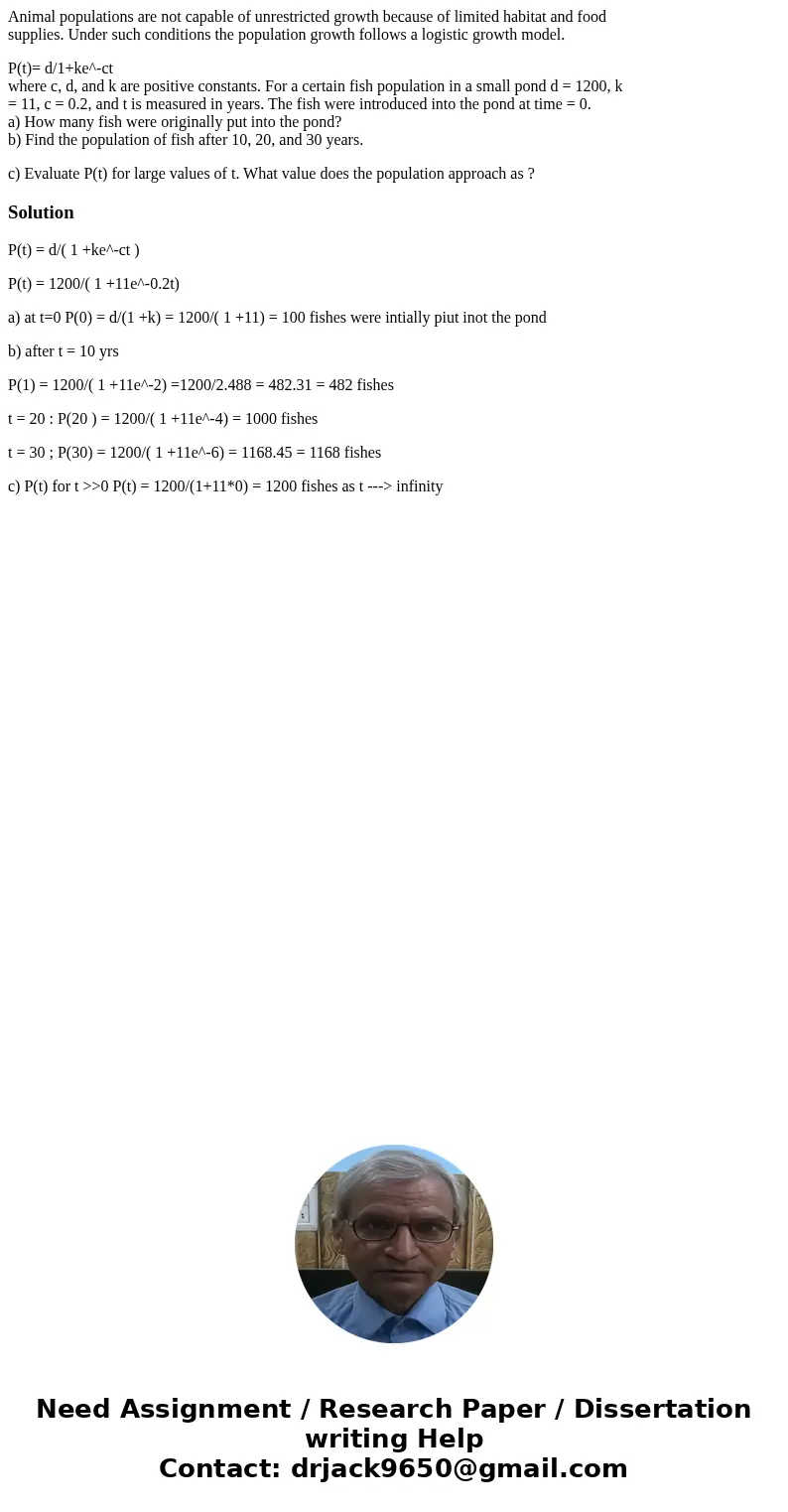Animal populations are not capable of unrestricted growth be
Animal populations are not capable of unrestricted growth because of limited habitat and food
supplies. Under such conditions the population growth follows a logistic growth model.
P(t)= d/1+ke^-ct
where c, d, and k are positive constants. For a certain fish population in a small pond d = 1200, k
= 11, c = 0.2, and t is measured in years. The fish were introduced into the pond at time = 0.
a) How many fish were originally put into the pond?
b) Find the population of fish after 10, 20, and 30 years.
c) Evaluate P(t) for large values of t. What value does the population approach as ?
Solution
P(t) = d/( 1 +ke^-ct )
P(t) = 1200/( 1 +11e^-0.2t)
a) at t=0 P(0) = d/(1 +k) = 1200/( 1 +11) = 100 fishes were intially piut inot the pond
b) after t = 10 yrs
P(1) = 1200/( 1 +11e^-2) =1200/2.488 = 482.31 = 482 fishes
t = 20 : P(20 ) = 1200/( 1 +11e^-4) = 1000 fishes
t = 30 ; P(30) = 1200/( 1 +11e^-6) = 1168.45 = 1168 fishes
c) P(t) for t >>0 P(t) = 1200/(1+11*0) = 1200 fishes as t ---> infinity

 Homework Sourse
Homework Sourse